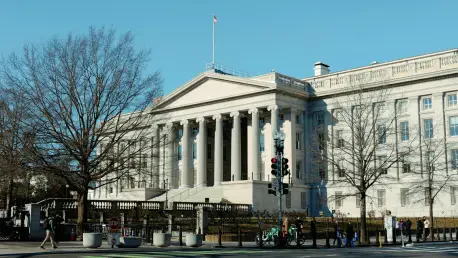In a significant judicial intervention, a federal court has temporarily blocked the release of agency layoff plans proposed by the Trump administration. This move comes amid a deeply contested legal battle over transparency and government restructuring. The appeal was granted following initial attempts by a district court to enforce the disclosure of these plans, citing that they are deliberative and subject to change. The Trump administration’s stance is that publicizing the plans could impede candid discussions within the executive branch, a contention that underscores ongoing debates about transparency in government operations.
Judicial Oversight in Government Restructuring
The legal controversy revolves around Judge Susan Illston’s initial directive demanding that major federal agencies present their reduction-in-force (RIF) plans for judicial review. Illston’s order aimed to ensure these layoffs complied with federal statutes, creating a pathway for greater transparency in the unfolding RIF processes impacting around 70 proposed actions. However, the Ninth Circuit Court’s emergency intervention has temporarily halted these disclosures, with the administration arguing that such plans are predecisional and confidential. Illston countered this by emphasizing their palpable immediate effects, aligning with arguments previously considered by the Supreme Court.
Dissecting the Courtroom Clash and Executive Intentions
Through a legal lens, the Supreme Court’s previous decision invalidated Illston’s injunction against the reduction-in-force actions. This decision has enabled several departments, such as State, Health and Human Services, Education, and the Environmental Protection Agency, to commence layoffs. Despite the procedural setback for obtaining transparency, Illston remained committed to scrutinizing the legality of these processes at the agency level. Meanwhile, departments like Interior and Agriculture have taken steps potentially leading to increased layoffs, including redefining “competitive areas” and encouraging employee transfers to crucial roles.
Legal Arguments for Transparency
The legal arguments focus on whether government restructuring plans should remain confidential. The Trump administration’s stance is rooted in protecting internal executive branch deliberations from external scrutiny, claiming that releasing the plans could constrain policy discussions. Opponents argue that transparency is essential for public accountability and ensuring that decisions adhere to statutory standards. The controversy highlights the inherent tension between governmental confidentiality and the public’s right to information.
Ethical Dimensions of Governance Secrecy
The debate over secrecy versus transparency has sparked significant ethical discussions among experts and officials. Panel discussions have underscored the moral responsibility of governments to disclose operational details impacting federal employees and broader operations. Expert opinions vary, with some advocating for full transparency to promote public trust, while others argue that certain levels of secrecy are necessary to preserve effective governance and internal communications.
Bureaucratic Processes and Public Impact
Understanding the bureaucratic implications of these processes reveals potential impacts on workforce dynamics and public sector efficiency. Discussions in workshops and group activities illustrated how engaging audiences in the demystification of complex administrative maneuvers can deepen comprehension of the practical effects of policy decisions. Audience engagement has been pivotal in shaping perceptions about the evolving nature of federal workforce management, prompting debates on the balance between efficiency and fairness in government operations.
Emerging Trends in Administrative Reforms
The landscape of administrative reform is constantly evolving, marked by initiatives that promise more fluid and adaptable workforce strategies. Product demonstrations and technology unveilings have showcased innovations that could streamline administrative processes. These advancements are pivotal, as they not only address current workforce challenges but also anticipate future needs by enhancing flexibility and adaptability in organizational structures and employee management.
Implications for Federal Workforce Management
The event provided crucial insights into the dynamic interplay between judicial oversight, executive actions, and agency-level implementations in shaping federal workforce management strategies. The refusal to disclose RIF plans has rendered the legal landscape complex, influencing future trends in transparency, compliance, and accountability. Understanding this multifaceted scenario of legal and ethical dimensions is essential for anticipating long-term implications and adaptations in public sector human resource strategies, potentially steering ongoing legislative and administrative discourse.









